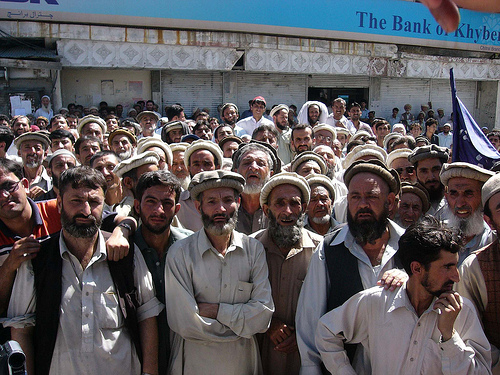
The term failed state is often used to describe a state perceived as having failed to meet some of the basic conditions and responsibilities of sovereign government. In international law, a failed state is one that, “though retaining legal capacity, has for all practical purposes lost the ability to exercise it.” According to the Fund for Peace that just released its seventh annual Failed State Index (FSI), a failed state is characterized by:
- loss of physical control of its territory or loss of the monopoly on the legitimate use of force;
- the erosion of legitimate authority to make collective decisions;
- an inability to provide reasonable public services; and
- an inability to interact with other states as a full member of the international community.
The FSI is made up of 12 social, economic and political indicators − each split into an average of 14 sub-indicators. The Fund for Peace bases its assessment primarily on content analysis of thousands of electronically available articles and reports that are processed by special software.
According to the latest index scores, Pakistan ranks 12th out of 177 countries examined. Looking at the indicators used for the ranking, Pakistan’s worst scoring categories were: Refugees and Internally Displaced Persons (9.2), Group Grievance (9.3), Security Apparatus (9.4), External Interventions (9.3), Legitimacy of the State (8.6), and Uneven Economic Development (8.5).
Indeed, Pakistan faces many challenges. Since 9/11, 35,000 Pakistanis have died in suicide bombings, with an average of more than one such bombing a week. Most observers agree that the situation is dire: clearly, much development work and reforms of the government and security sectors are badly needed. But is Pakistan a “failed state” as we commonly understand it: does it meet the above definition?
The first criterion above is the inability to physically (and legitimately) control territory. In Pakistan’s north-western regions, along the border with Afghanistan, tribal militants and the Taliban are actively challenging the government’s physical control. In the south-west, Pakistan is close to losing one of its biggest provinces − Balochistan – to a bloody insurgency that openly seeks independence. (It was in this province, by the way, that two Swiss tourists were kidnapped on 1 July 2011 and are still being held hostage.) And while one tends to think of Pakistan’s military as a more professional, secular organization, the evidence now clearly shows that it has been infiltrated by violent Islamist, insurgent and terrorist groups at basically all levels.
On point two, Pakistan fares no better. Throughout the country, there is an almost complete absence of legitimate authority and institutional mechanisms for decision-making. Most decisions are made by the President himself who also tends to personally conduct Pakistani diplomacy. Coordination between different branches of government is also virtually non-existent.
And on point three, there is no question. Pakistan does not provide reasonable public services to all or at least most of its citizens (which flows directly from its lack of territorial control). Even in Karachi, the country’s biggest city, the authorities are unable to provide even a minimum of personal security, with an average of 4.7 murders in the city every night– most of which are politically motivated. And due to ongoing military operations and militant activities in the Federally Administered Tribal Areas (FATA) in north-west Pakistan, there has been enormous internal displacement of persons.
On the fourth point, however, Pakistan passes. It is active in many international organizations and regularly takes part in high-level multilateral and bilateral talks − US air-strikes in the country notwithstanding.
Is Pakistan a failed state? Somehow the table of perceptions seems to stand — as if magically suspended by this single leg. Perhaps the matter is ultimately a semantic one, but it should surprise no one that this fourth criterion has come in for some heavy criticism.
One wonders how any state that wants to satisfy it could fail to do so.
The number of terrorist attacks in Pakistan increased dramatically between 2003 and 2010. The number of fatalities peaked in 2009 with more than 11,000 deaths. The following map shows terrorist attacks in Pakistan in 2010. By zooming and clicking on the markers you can retrieve further information about the incidents.
Data source: START’s Global Terrorism Database

